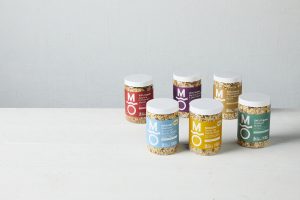Adaptation to the new shopper.
Today's typical shopper is very different from yesterday's – or even before Covid.
According to Creative Activation's fifth ShopperPANEL Retail Report published in August:
- Purchases are more planned than ever as shoppers spend less time in the store and make purchases outside of their primary purpose less often
- Stock issues are the biggest barrier to selling on the day
- Convenience and caution are driving the rise in online shopping.
While many of these changes have been caused by the impact of Covid-19 on the way we live, some will remain (and others will arise). In this feature, we look at changing buyers and how the FMCG industry is adapting to their needs.
Online Shopping Growth
Online shopping is the new normal for many consumers in Australia. While the move to the internet has been talked about for a long time, Covid-19 has given this topic a lot more momentum in the past year and a half, says Mark Blitenthall, Manager Service Engagement at GS1 Australia.
"Digital channels are multiplying and becoming more and more important for a new generation of buyers and thus generate a larger share of sales every year," he says.
At the same time, buyers are becoming more and more demanding.
"They want more information about products and a consistent experience across all channels and devices," said Blitenthall. "They increasingly expect more transparency about product information (e.g. nutrition and allergens) and it is necessary for brand owners to meet these expectations as much as possible."
Information hungry buyers
Today's buyers are more connected than ever. They can get information with a tap of a phone screen and share their experiences – good or bad – instantly on social media.
Creative Activation Group's executive director Gerard Feehan says the importance of shelf availability and ease of purchase for the connected shopper cannot be underestimated.
"Shoppers research their purchases online / on their phone before going to the store," he said. “They know more than ever what they want before they step into the store and they value availability. If your brand isn't visible and available, don't expect buyers to linger and search. "
Shifts in shopping location, frequency and volume
Not long after the pandemic hit Australia, panic buying erupted. While shoppers began to understand that key retailers such as grocery stores would remain open, other factors affecting supply and inventory management persisted.
Stephen Wilson, category and insights manager at Strikeforce, says Covid initially had a huge impact on inventory management and forecasting, with significant supply chain disruptions and existing forecasts "going out of the window".
"Over the past 18 months this has returned to a steady and business as usual" situation, apart from some short-term disruptions in areas where temporary bans are announced, "he said.
Fortunately, retail marketing experts like Strikeforce have come to the fore, helping retailers and brands keep supply and inventory on their shelves.
“Essentially, this support has enabled retailers and suppliers to maintain brand visibility and solid inventory weight when purchasing,” said Wilson.
Find out more about emerging shopper trends and how external sales and marketing specialists support FMCG brands and retailers in the September issue of Retail World.




